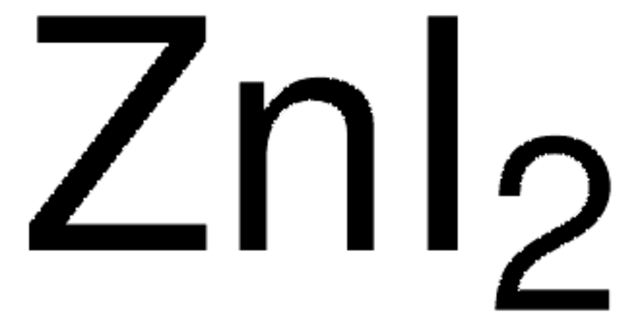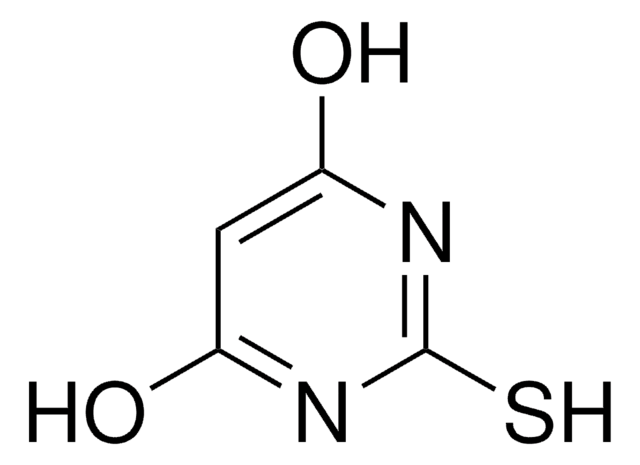96483
Zinc iodide
purum p.a., ≥98.0% (AT)
Synonym(s):
Diiodozinc, Zinc diiodide
About This Item
Recommended Products
grade
purum p.a.
Quality Level
Assay
≥98.0% (AT)
form
powder or crystals
mp
445 °C (lit.)
density
4.74 g/mL at 25 °C (lit.)
anion traces
sulfate (SO42-): ≤500 mg/kg
cation traces
Ca: ≤500 mg/kg
Cd: ≤200 mg/kg
Co: ≤50 mg/kg
Cu: ≤50 mg/kg
Fe: ≤100 mg/kg
K: ≤500 mg/kg
Na: ≤500 mg/kg
Ni: ≤50 mg/kg
Pb: ≤50 mg/kg
SMILES string
I[Zn]I
InChI
1S/2HI.Zn/h2*1H;/q;;+2/p-2
InChI key
UAYWVJHJZHQCIE-UHFFFAOYSA-L
Looking for similar products? Visit Product Comparison Guide
Related Categories
General description
Application
- As a catalyst for one-pot synthesis of aminoindolizines via sequential A3 coupling/cycloisomerization.
- As a catalyst for one-pot synthesis of quinoxalines.
- As a precursor to synthesize highly luminescent quantum dots.
- As a redox electrolyte in hybrid energy storage systems.
- As a dopant to prepare highly flexible PVA composite films. The addition of zinc iodide enhances the optoelectronic properties of polymer composite.
Signal Word
Warning
Hazard Statements
Precautionary Statements
Hazard Classifications
Aquatic Acute 1 - Aquatic Chronic 1 - Eye Irrit. 2 - Skin Irrit. 2 - STOT RE 2 Oral
Target Organs
Thyroid
Storage Class Code
13 - Non Combustible Solids
WGK
WGK 3
Flash Point(F)
Not applicable
Flash Point(C)
Not applicable
Personal Protective Equipment
Choose from one of the most recent versions:
Already Own This Product?
Find documentation for the products that you have recently purchased in the Document Library.
Our team of scientists has experience in all areas of research including Life Science, Material Science, Chemical Synthesis, Chromatography, Analytical and many others.
Contact Technical Service









